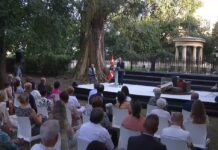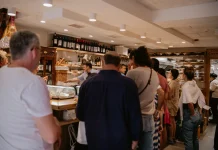Estudios Durero es una empresa de artes gráficas vasca que se sale de lo convencional. Sólo hay que darse una vuelta por su web para entender que su visión va mucho más allá de lo que solemos esperar de una empresa de este tipo. Ellos han entendido que su categorización como empresa, «artes gráficas«, tiene que marcar su trayectoria, y por eso el arte ocupa un lugar preeminente en su trabajo.
Sin duda, algunos de sus proyectos o técnicas, como Didú, Tako, Estereoscópico o D-dos, van más allá de lo que esperamos que una empresa de impresión ofrezca. Pero nosotros nos vamos a centrar en el primero de ellos. En Didú.
Y lo vamos a hacer porque ha conseguido algo que es realmente difícil de conseguir, que algunos de los más importantes y prestigiosos medios de comunicación del mundo le dediquen amplios artículos y reportajes.
Como ellos mismos cuentan en su web:
Didú es una metodología desarrollada por Estudios Durero para el tratamiento y reproducción de imágenes en relieve. Una combinación de herramientas tecnológicas, artísticas y pedagógicas que nos permite convertir una imagen digital en una imagen que se puede tocar y que tiene sentido no sólo para la vista sino también para el tacto. A través de un trabajo de interpretación artística y análisis de texturas, formas y volúmenes, se define un proceso de producción para cada obra. Didú dota a las imágenes de una nueva dimensión de reconocido valor pedagógico que tiene múltiples aplicaciones en el mundo del arte. Didú abre por primera vez las puertas del mundo de la fotografía y las imágenes pictóricas a personas con discapacidad visual. Un logro avalado por ONCE, institución que ha participado en el desarrollo de Didú desde sus comienzos y que nos ha guiado en el proceso de mejora y perfeccionamiento de nuestra metodología.
Didú. Hoy toca el Prado. from Estudios Durero on Vimeo.
Un logro extraordinario, Tanto la técnica como la proyección que se ha conseguido. No es fácil para nadie, y menos para una empresa de estas características, que en principio parece muy alejada de la tecnología de vanguardia capaz de interesar a los medios de comunicación, crear un interés internacional de este nivel.
Por cierto. En algunas informaciones parece que lo único importante es el contenedor de la exposición, el Museo de El Prado. Sin ánimo de quitar valor a que un centro artístico de su importancia dedique una exposición a esta técnica, no es bueno olvidar que lo realmente importante es ésta, la técnica Didú.
El Museo de Bellas Artes de Bilbao ya tiene, desde hace unos tres años, cinco obras de su colección reproducidas en esta técnica. Y esperemos que la colección se amplíe.
Washington Post – 11/2/2015 – USA
A remarkable way for the visually impaired to sample the masterpieces
The No. 1 unspoken rule in an art museum: Don’t touch. Museum guards are strategically placed throughout museums to ensure harmful oils on visitors’ hands won’t corrode artwork. But at the current exhibition at the Museo del Prado in Madrid, touching is encouraged. Works from masters such as Leonardo Da Vinci, Francisco Goya, and El Greco can be felt at the exhibition for the museum’s visually impaired guests. It features six three-dimensional works from different genres created using a technique called “Didu” that adds volume and texture. The works are accompanied by text in written in Braille. The museum’s sighted guests can experience the exhibit with darkened glasses and an accompanying audio guide.
(Sigue) (Traducción automática)
——————————————————–
The New York Times -6/3/2015 – USA
At Museo del Prado, Blind Visitors Can Touch Masterpieces

Guards make sure visitors to the Museo del Prado stay at arm’s length from its masterpieces. But here on a recent morning was José Pedro González running his fingers over one of El Greco’s most famous paintings, “The Nobleman With His Hand on His Chest.” He went back and forth over the nobleman’s eyes, rubbed his beard and eventually reached his hand, tracing the edges of each digit. The work, of course, was a copy. But more surprisingly, the copy was in three dimensions so that Mr. González, who is 56 and has been blind since the age of 14, could experience the painting firsthand.
(Sigue) (Traducción automática)
——————————————————–
Time -12/2/2015 – USA
This Exhibit Lets Blind People Touch the Mona Lisa
A museum in Madrid, Spain has unveiled an inclusive exhibit featuring artistic masterpieces recreated so the blind can feel how they look, CBS News reports. The works on display at the Prado Museum were made using the Didu technique, which adds texture to paintings. The exhibit, titled “Hoy Toca el Prado” opened January 20 and features works like El Greco’s El caballero de la mano en el pecho and Leonardo da Vinci’sMona Lisa.
(Sigue) (Traducción automática)
——————————————————–
Daily Mail – 10/2/2015 – Gran Bretaña
Feeling artistic: Gallery unveils specially created versions of classic paintings that blind people can ‘see’ by touching them
Given it’s been stolen, spray-painted and attacked with a cup of tea, touching the Mona Lisa is one of the rarest treats in the world. But there’s now an easy way to get hands-on with da Vinci’s masterwork – after a gallery introduced a 3D version for the blind. A replica of the 16th Century portrait, whose real-life counterpart is behind bulletproof glass in the Louvre, is at Madrid’s Prado Museum in a bid to inspire art-lovers with a new perspective.
(Sigue) (Traducción automática)
——————————————————–
CBS News – 10/2/2015 – USA
Museum displays paintings for the blind
A blind person uses her hands to feel a copy of El Greco’s «The gentleman with his hand on his chest» at The Prado Museum in Madrid,. ‘Hoy toca el Prado’ (Touch The Prado) allows blind or vision-impaired visitors to explore copies of six masterworks with their hands.
(Sigue) (Traducción automática)
——————————————————–
Smithsonian – 26/2/2015 – USA
Please Touch the Art: 3-D Printing Helps Visually Impaired Appreciate Paintings
In museums the world over, one rule trumps all others: look but don’t touch. But what if you can’t look? Why should being blind prevent a person from appreciating works of art that are not only masterpieces, but also an important part of his or her country’s cultural history? That was the question facing the Madrid’s Prado museum. As with many other European museums, the Prado has worked hard over recent years to widen access to its collections, investing in outreach programs or simply installing wheelchair ramps throughout its historic galleries. Up until now, however, blind and partially sighted people have been unable to enjoy the museum’s vast collection, which includes iconic works by Goya, El Greco and Velázquez.
(Sigue) (Traducción automática)
——————————————————–
Sydney Morning Herald – 7/3/2015 – Australia
Prado exhibition unlocks paintings for the blind
Guards make sure visitors to the Museo del Prado stay at arm’s length from its masterpieces. But here on a recent morning was Jose Pedro Gonzalez running his fingers over one of El Greco’s most famous paintings, The Nobleman With His Hand on His Chest. He went back and forth over the nobleman’s eyes, rubbed his beard and eventually reached his hand, tracing the edges of each digit.
(Sigue) (Traducción automática)
——————————————————–
The Star – 13/272015 – Canadá
Go ahead and touch the Mona Lisa
The No. 1 unspoken rule in an art museum: Don’t touch. Museum guards are strategically placed throughout museums to ensure harmful oils on visitors’ hands won’t corrode artwork. But at a current exhibition at the Museo del Prado in Madrid, touching is encouraged. Works from masters such as Leonardo da Vinci, Francisco Goya and El Greco can be felt at the exhibition for the museum’s visually impaired guests. It features six three-dimensional works from different genres created using a technique called “Didu” that adds volume and texture. The works are accompanied by text written in braille. The museum’s sighted guests can experience the exhibit with masks and an accompanying audio guide.
(Sigue) (Traducción automática)
——————————————————–
Last Updated on Mar 11, 2015 by About Basque Country
































